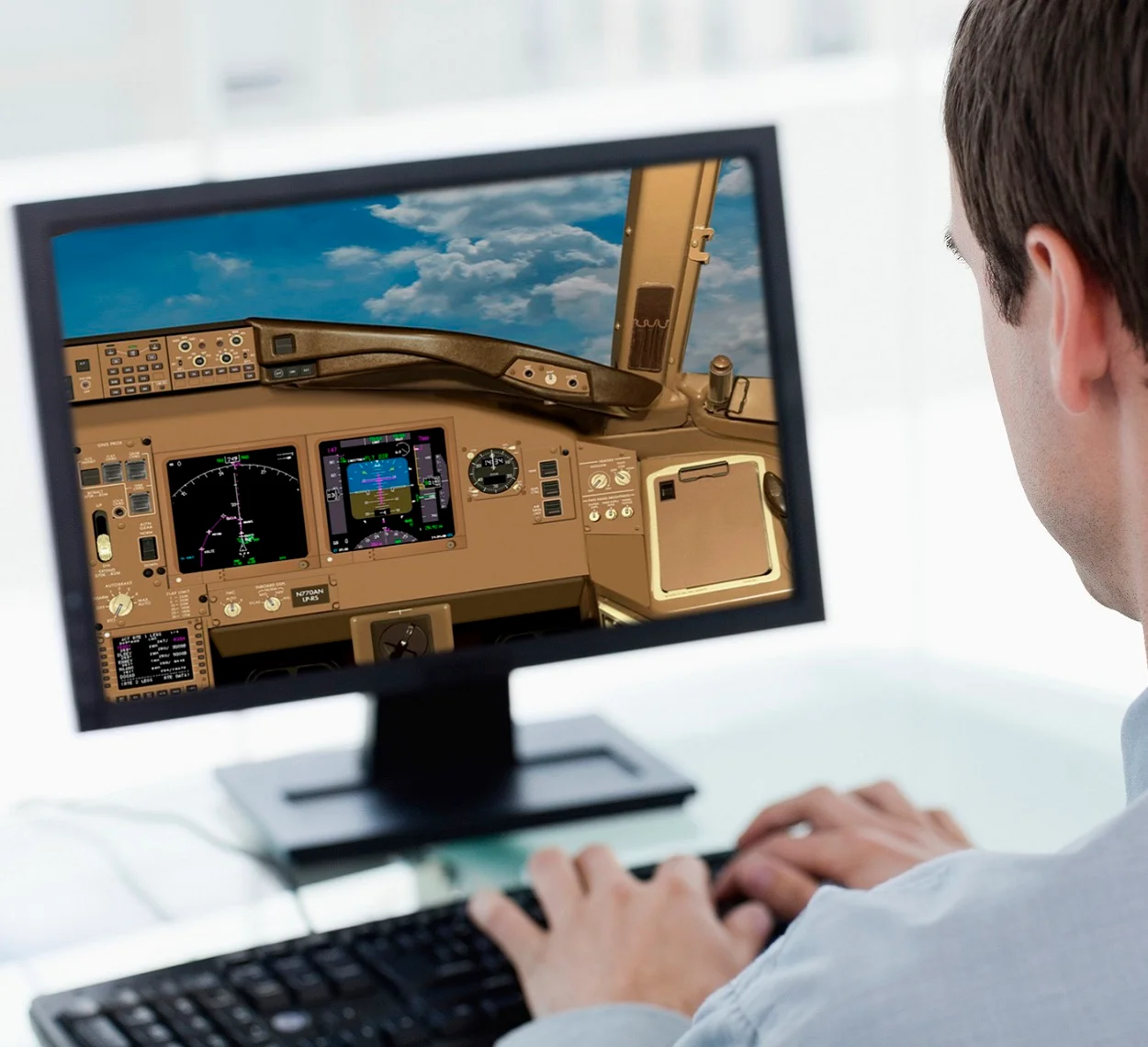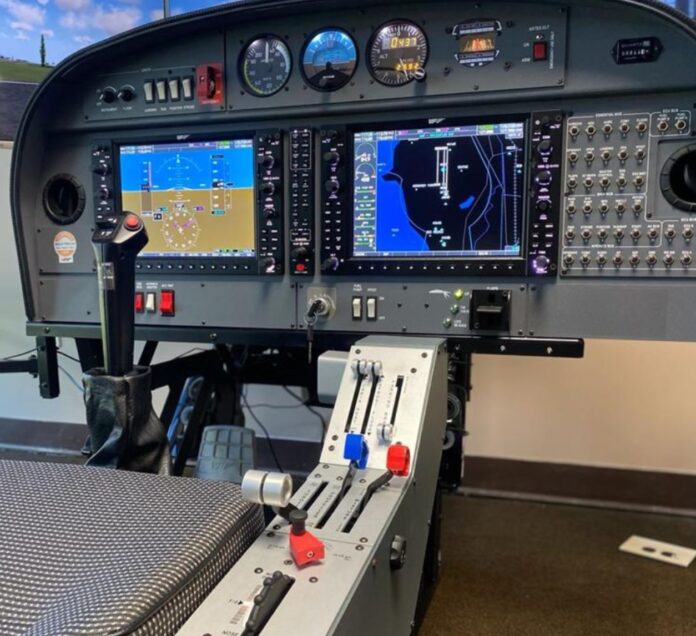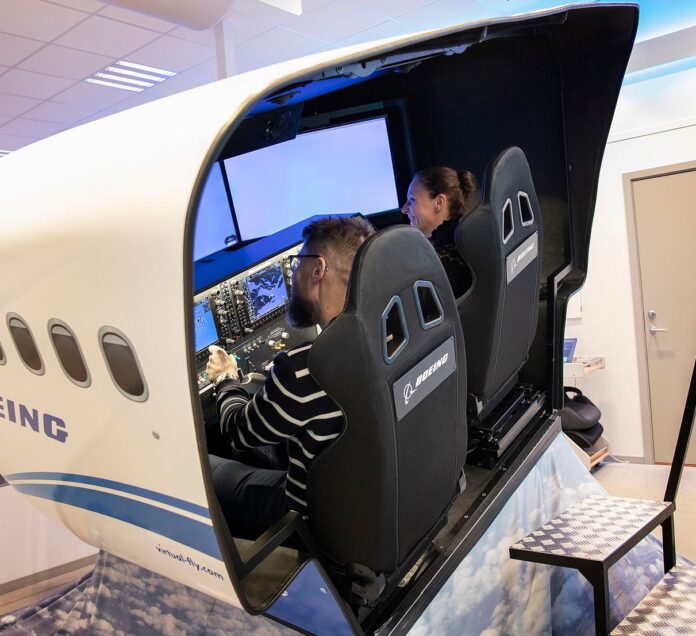The realm of aviation training has been revolutionized by the advent of professional flight simulators. These sophisticated tools are instrumental in equipping pilots with the skills and confidence needed to navigate the skies safely and efficiently.
Now, we want to explore the historical development of these simulators, their current state-of-the-art technologies, and future innovation prospects. We’ll also discuss various training methods and applications, the impact on the aviation industry, and the broader implications for pilot training and safety.

Evolution of Flight Simulators
The journey of flight simulation in aviation training began in the early 20th century. Initial simulators were rudimentary, focusing on basic aircraft controls and flight dynamics. These early models laid the groundwork for future developments. Over the decades, technological advancements in computing and engineering facilitated the evolution of these training tools from simple mechanical systems to sophisticated, computer-driven setups.
Key milestones in this development included the introduction of visual systems, providing pilots with a more immersive experience. The transition from analog to digital technology marked another significant step, allowing for more complex and realistic scenarios. These historical advancements played a crucial role in establishing the foundation for today’s advanced simulators.
Current State-of-the-Art Technology
Today’s simulators represent the pinnacle of technological innovation in aviation training. They offer highly realistic and detailed environments, replicating a wide range of flying conditions and scenarios. High-fidelity graphics, motion systems, and detailed cockpit replicas provide pilots with an immersive experience that closely mirrors real-world flying.
One of the key features of current simulators is the virtual flight integration, which aid pilots in learning and decision-making processes. These AI-driven assistants can provide real-time feedback, suggest corrective actions, and help pilots understand complex flight dynamics. This integration exemplifies how technology is used to enhance learning experiences in aviation training.
The capabilities of these state-of-the-art systems extend to virtually every aspect of flying, from basic navigation to handling emergency situations. Leading models in the market are distinguished by their accuracy, realism, and the depth of scenarios they can simulate.

Training Methods and Applications
Flight simulators offer a range of training modules, catering to various levels of pilot expertise. For beginners, these modules cover basic flight principles, such as takeoff, navigation, and landing. As pilots advance, the training becomes more complex, focusing on specific aircraft systems, instrument flying, and handling adverse weather conditions.
Specialized programs are also available for different types of aircraft, including commercial airliners, military jets, and helicopters. These programs are tailored to the unique characteristics and requirements of each aircraft, providing pilots with the specific skills and knowledge needed to operate them effectively.
The versatility of simulators in offering both basic and advanced modules is one of their key strengths. This adaptability ensures that pilots at all levels of their career can benefit from comprehensive and targeted training experiences.
Real-world Scenario Replication
One of the most significant advantages of using simulators in aviation training is their ability to replicate real-world flying conditions and scenarios. This capability is crucial in preparing pilots for the unpredictable nature of flying. Simulators can recreate a wide range of scenarios, from routine flights to emergency situations, such as engine failures or severe weather conditions.
The importance of training in a realistic environment cannot be overstated. It allows pilots to experience and react to potential challenges in a safe and controlled setting. This experience is invaluable in building confidence and decision-making skills, which are critical in actual flight situations.
Case studies from various aviation schools and airlines underscore the effectiveness of scenario-based training. Pilots who have undergone extensive simulator training often report feeling better prepared and more confident in handling real-life flying conditions.

Global Standards and Certification
Flight simulation training is governed by international standards to ensure quality and consistency across the industry. Organizations like the Federal Aviation Administration (FAA) in the United States and the International Civil Aviation Organization (ICAO) play a pivotal role in setting these standards.
The certification process for simulators involves rigorous testing and evaluation to ensure they accurately replicate the flying experience and meet the requirements. This process is essential in maintaining the credibility and effectiveness of simulator-based training programs.
Global standards and certification also facilitate mutual recognition of training qualifications across different countries, which is crucial in the globalized aviation industry. This harmonization ensures that pilots trained in one country can have their skills and qualifications recognized internationally, enhancing mobility and career opportunities within the industry.
Impact on Aviation Industry
The primary impact of flight simulators in the aviation industry is the significant enhancement of pilot skills and overall safety. By providing a risk-free environment for training, simulators allow pilots to hone their skills, understand aircraft systems, and practice responding to various flight conditions and emergencies.
Research and statistical data consistently demonstrate the positive impact of simulator training on aviation safety. Studies show a decrease in incident and accident rates among pilots who undergo comprehensive simulator training. This correlation highlights the crucial role of these tools in maintaining high safety standards in the industry.
Real-world instances where simulator training has averted potential aviation incidents further reinforce the importance of these tools. Pilots who have experienced emergency scenarios in simulators are often better equipped to handle similar situations in real flights, contributing to safer skies for everyone.

Cost-Effectiveness and Accessibility
Another significant benefit of simulator-based training is its cost-effectiveness compared to traditional flight training. Actual flight training involves substantial expenses, including fuel, aircraft maintenance, and environmental costs. Simulators, on the other hand, offer a more economical alternative, providing extensive opportunities without incurring these additional costs.
Simulators make pilot education more accessible. They eliminate the need for access to various types of aircraft, allowing a wider range of individuals to pursue pilot training. This accessibility is crucial in addressing the growing demand for skilled pilots in the aviation industry.
Summary
For aviation professionals and enthusiasts, engaging with and appreciating the value of flight simulation is essential. These tools not only represent a cornerstone of pilot training but also symbolize the ongoing pursuit of excellence and safety in the skies.









